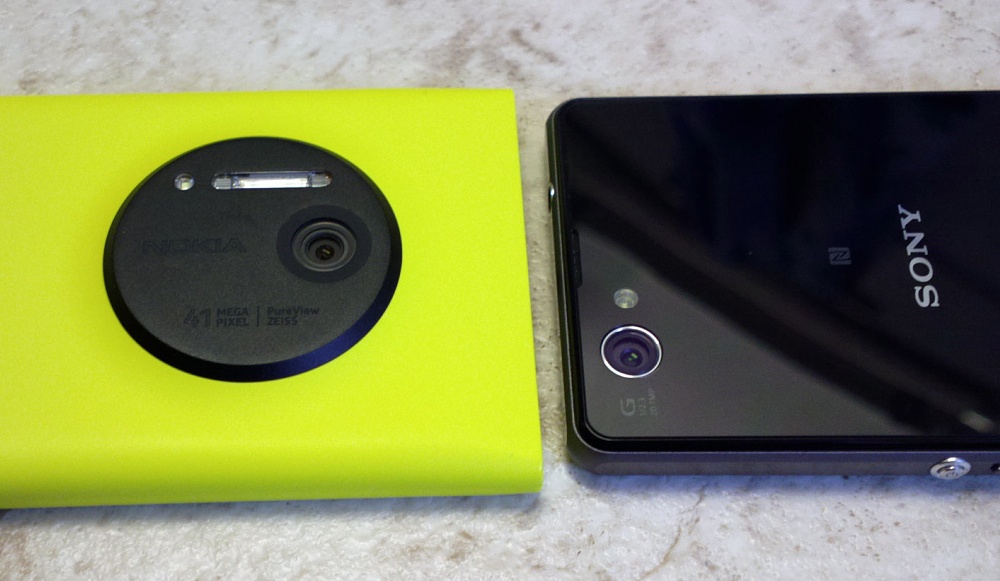
As often happens when comparing very different devices with different output resolutions, different frame size and (here) different ways/degrees of (in theory, lossless) digital zoom, matching image crops up pixel by pixel proves impossible, so expect the subject matter to look differently framed in the otherwise identically sized 1:1 crops, all at 700 by 400 pixels, each from 5MP or 8MP originals, all of which are linked below in case you want to do your own analysis at home.
Test 1: Bright sunshine, medium distance subject
In this case one of my favourite subjects for snapping in tests, since it faces the afternoon sun and has plenty of texture and detail:

And here are central crops from the 5MP (1020, top) and 8MP (Z1 Compact, bottom) photos of the scene:


Original JPGs, if you're interested. Lumia 1020, Z1 Compact
This is interesting - the 8MP shot from the Z1 Compact does, arguably have slightly more detail. But it's all for nought because of the colouration - there's a reddish tint and a 'quality' that makes the Sony photo look horribly artificial. You're always aware that you're looking at a photo, whereas the 1020 nails this building so perfectly that I could be looking at it through a window.
Test 2: Bright sunshine, same subject but zoomed
Given that both camera phones claimed to offer lossless digital zoom, it was worth taking a second shot at the same scene with both devices, zoomed in fully on the 1020 and on the Z1 Compact. Unfortunately, the latter has little help for the user at knowing when the 'PureView' zoom has run out and lossy digital zoom is starting. The volume/zoom buttons let the user zoom in way beyond the critical point, resulting in image degradation that's all too easy to achieve (as shown here).
Here are central crops from the 5MP (1020, top) and 8MP (Z1 Compact, bottom) photos of the scene:
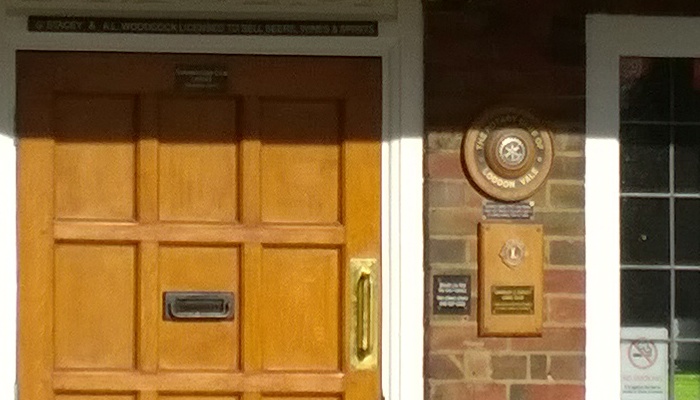
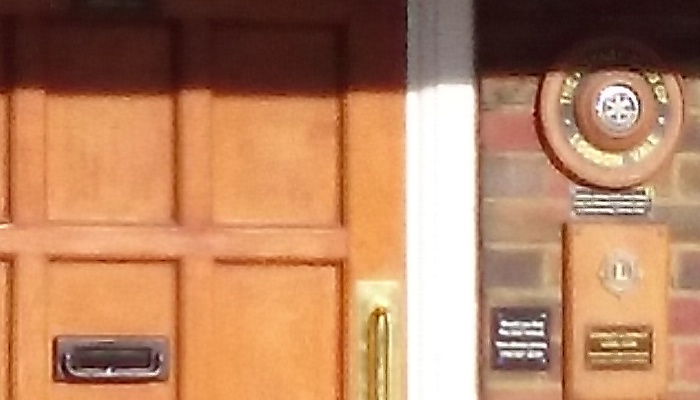
Original JPGs, if you're interested. Lumia 1020, Z1 Compact
With no oversampling because of the use of maximum PureView zoom, the 1020's shot now has a little grain and noise, but the effect is slight and the detail is extraordinary for a phone with such relatively slim dimensions. Look over the front door - you can read the tiny licensing information! The Z1 Compact has strayed too far into lossy digital zoom here - look at the artefacts across the image. Arguably my fault in that I shouldn't have tried zooming to this degree on the device - but again, the software should have stopped me or warned me.
Test 3: Weak sunshine, zooming again, but limited
Another sunny subject with plenty of detail, a satellite dish on my wall, but this time I went easier on the zoom on the Z1 Compact, to try to make sure that my zooming didn't stray into blocky, lossy territory. Here's the full scene, unzoomed:

And here are central crops from the zoomed 5MP (1020, top) and 8MP (Z1 Compact, bottom) photos of the scene:
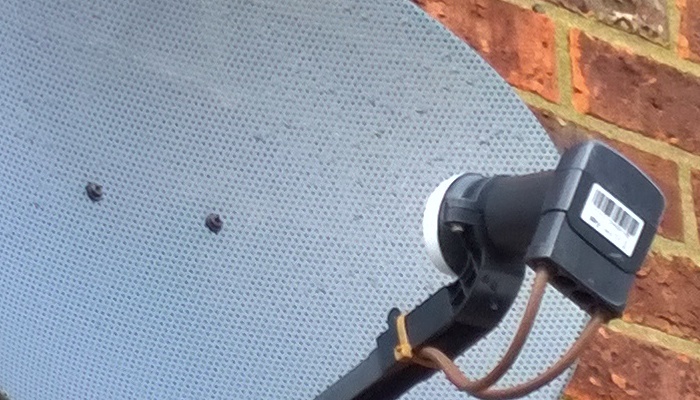
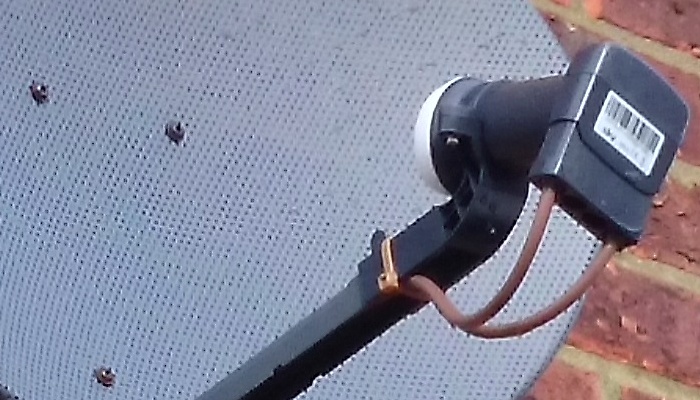
Original JPGs, if you're interested. Lumia 1020, Z1 Compact
The Z1 Compact does only a little better here. There's lossy zoom around some of the edges, plus some unpleasant blurring where noise reduction has taken place. Plus, again, a slight red tint, as you can see from the bricks. Meanwhile the Lumia 1020 nails the photo - again.
Test 4: Bright sunshine, distant subject, zoomed
Making the most of the rare (and somewhat intermittent) sun, I zoomed in to a medium-distant house and its extension, with plenty of detail again. And again, I tried as hard as possible to keep the Z1 Compact's zoom within the 'safe' region:

And here are central crops from the 5MP (1020, top) and 8MP (Z1 Compact, bottom) photos of the scene:
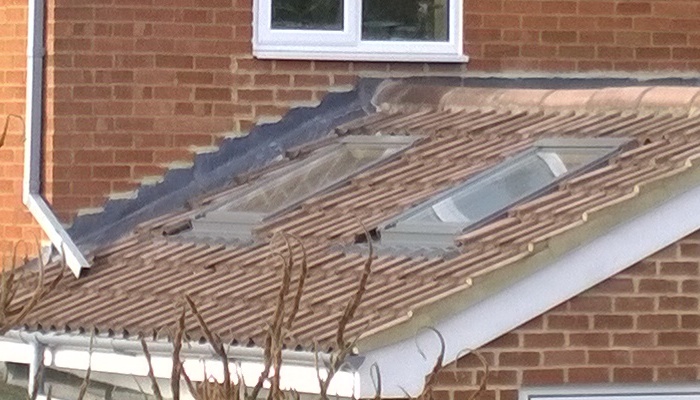

Original JPGs, if you're interested. Lumia 1020, Z1 Compact
With a very, very gentle finger on the zoom controls(!), this is as competitive as the Z1 Compact's camera gets - although the Lumia 1020 zoomed photo looks slightly more natural, the two images aren't worlds apart. If only Sony made things easier for users by limiting the zoom to the 8MP crop limit on the sensor...
Test 5: Indoor lighting macro
Room lighting was typical indoors - a 100W equivalent energy saving bulb, nicely warmed up. So not that bright, but also not dim, I'd expect good results from both devices:

And here are central crops from the 5MP (1020, top) and 8MP (Z1 Compact, bottom) photos of the scene:


Original JPGs, if you're interested. Lumia 1020, Z1 Compact
More than any other photo crop here, this tells the story of the comparison - the 1020's PureView oversampling and larger sensor strive to produce a satisfying photo with very little noise, in tough lighting conditions, whereas the Z1 Compact's photo is noisy and grainy and quite clearly sub-par. Sony keeps making a song and dance about its 'EXMOR R' sensors, but if the Xperia Z range handsets are anything to go by, the EXMOR brand means absolutely nothing. Moreover, there's no evidence that Sony is using the higher native/underlying resolution to reduce noise with oversampling - definitely a missed trick in its camera software.
Test 6: Party scene mock-up
My infamous party mock-up scene, deliberately shot handheld and with moving subject. This is where most camera phones produce blurry messes:

And here are central crops from the 5MP (1020, top) and 8MP (Z1 Compact, bottom) photos of the scene:
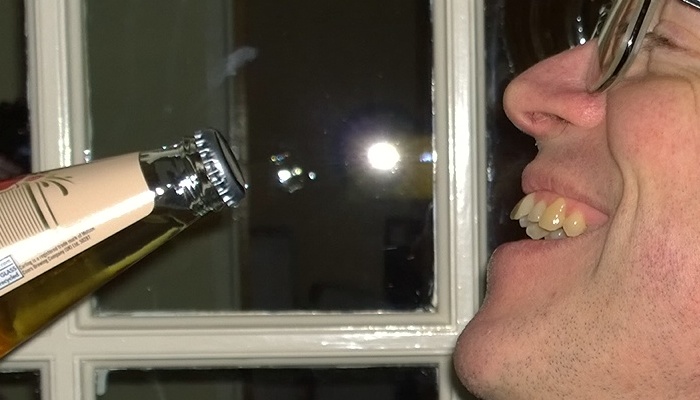
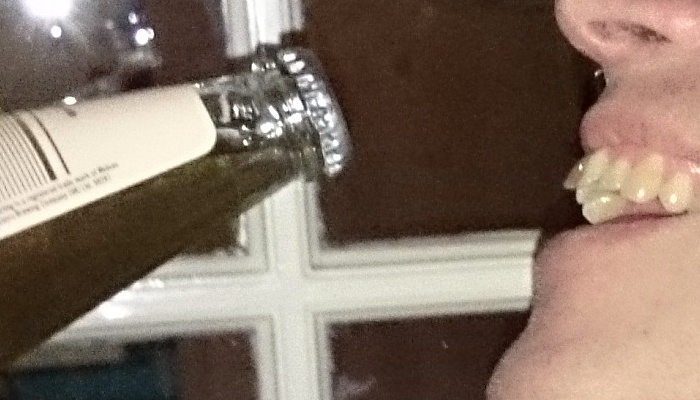
Original JPGs, if you're interested. Lumia 1020, Z1 Compact
Keeping exposure down to 1/60s, unusually for a device with LED flash, the Z1 Compact photo is at least not significantly motion-blurred, though the quality of the image is again very low, with massive digital noise and noise reduction over-zealously trying to reduce this. Look at my chin, the 1020 photo shows up every chin-hair stub, while you can't see these at all in the Sony Xperia version.
This particular comparison is always won by the device with proper Xenon flash, of course, but I keep emphasising this test case because it reflects the indoor/event/social photos that a lot of people take in the real world - and then get disappointed by the results.
Test 7: Dark of night
The absolute test of low light prowess, a handheld shot at midnight, with some street lights the only relief:

And here are central crops from the 5MP (1020, top) and 8MP (Z1 Compact, bottom) photos of the scene:
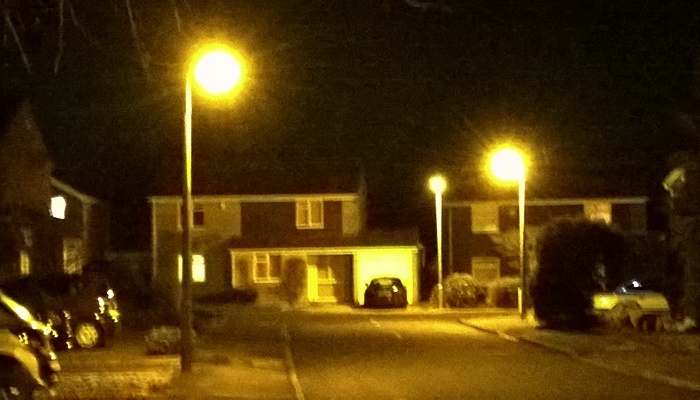
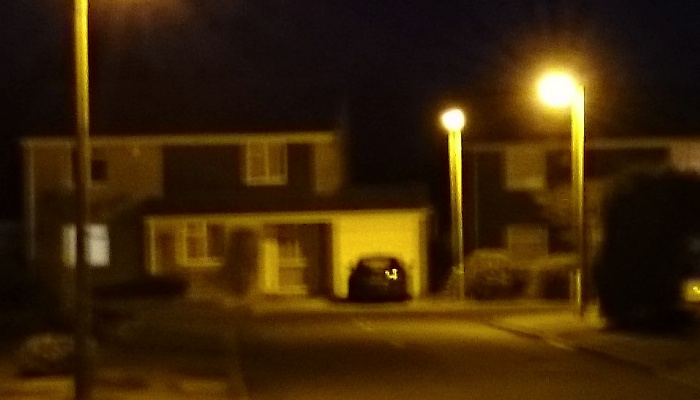
Original JPGs, if you're interested. Lumia 1020, Z1 Compact
In truth, the OIS in the Lumia 1020 didn't work perfectly here, there's still a very tiny amount of camera motion blur. But the result is far crisper than that from the Z1 Compact. The latter's heavy noise reduction does keep the image fairly clean, but the lack of OIS means that even with me trying to keep the phone still during capture, there's still motion to affect crispness.
Verdict
My general rule with cameras is that Physics is king. The bigger the optics, the bigger the aperture, then the more light can be let in and processed, with better results across the board. And so it proves, with the 1/1.5" sensor in the Lumia 1020 (over twice the physical size of that in the Z1 Compact) demonstrating significantly better performance in low light.
Yet there's more in play here that needs exploring. With a 1/2.3" sensor and F2.0 aperture, the photos from the Z1 Compact (and the original Z1) should be much better than they are. Add in the colour cast in some shots and very clumsy noise reduction and it's evident that very little care has been taken by Sony with the imaging algorithms in these devices. As we saw with Nokia and the switch to Lumia Black algorithms, software can make or break a smartphone camera. Sony is in dire need of some of the same expertise, applied to its Xperia cameras.
Add in the absence of any noticeable oversampling and a clumsy implementation of 'PureView' digital zoom (in that there's no protection against zooming in 'too far') and it's clear that the camera in the Z1 Compact is currently half-baked and doesn't live up to the promise of the marketing, or even its own specifications.
It has been suggested that I was crazy to compare this Android camera phone with the photographic masterpiece that is the Lumia 1020, but I disagree. Yes, the result was never in doubt, but the contest should have been closer than it ended up. I suspect I'd have achieved similar, or even better results with a 1/3"-sensored Apple iPhone or Samsung Galaxy S4. And that has to be embarrassing for Sony....
PS. I remain amazed by how often, in web features and magazine articles, the Lumia 1020 is completely ignored in camera phone shootouts. Maybe this Windows Phone is simply so far out in front that it would make a mockery of the competition?
